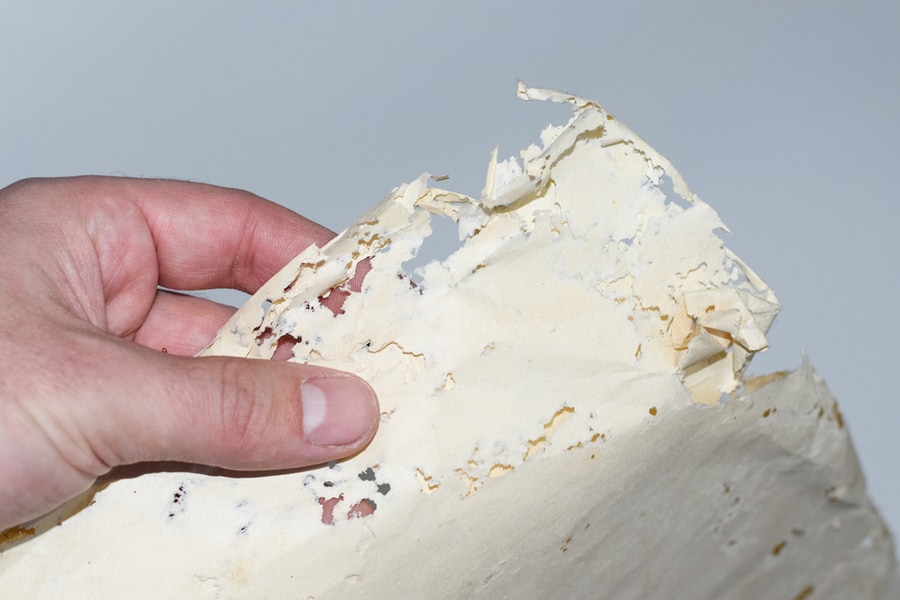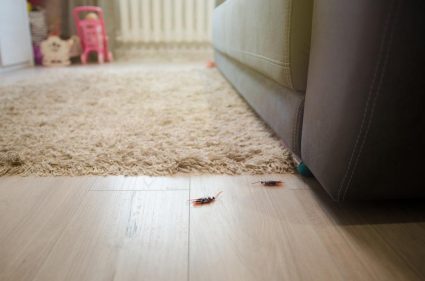
Silverfish is an odd-looking crawling insect with a silver lining. Unlike its name, it is not an actual fish. Silverfish is a pest capable of causing damage.
They consume anything with starch.
Papers and storage boxes seem to be their favorite delicacy. Though not harmful to humans, silverfish can cause severe damage to your properties.
Silverfish is a primitive wingless insect. Its fish-like movement and silver-light-grey color birthed its name. It is a nuisance.
The female silverfish can produce up to hundred eggs, and they mature in less than three months.
Few silverfish can cause a full-blown infestation in a few weeks. Their reproductive cycle is on the large side.
The key sources of attraction for silverfish include damp areas, fabrics, storage boxes, books, etc. You can prevent them from appearing by cutting off their sources of interest.
However, there are effective methods to keep silverfish out of storage boxes:
- Disrupt the temperature
- Boric acids
- Seal up storage boxes
Silverfish is a common pest. Its creeping nature can be pretty upsetting as it can be quite destructive when they get the opportunity. Your storage boxes are not safe when they are in your home, no matter how few they seem to be.
4 Ways To Keep Silverfish Out of Storage Boxes
Imagine how shocking it is to open your storage boxes and see swarming insects. It is not a pleasant sight or experience. Hence, the need to keep silverfish out of storage boxes.
1. Disrupt the Temperature

Temperature is a contributing factor to the growth of silverfish. They love humid and dark areas. It is an ideal habitat for them.
The perfect humidity level for a silverfish is between 75%to 95%. Such a level increases their reproductive rate. Hence, a full-blown infestation.
It is of utmost importance to disrupt the temperature of your storage boxes. Such disruptions will make the box an unfavorable habitat. Therefore, an effective way to keep them out.
An air conditioner or dehumidifier can be used to regulate the humidity of the temperature.
2. Boric Acid to the Rescue

Boric acids are specific chemical compounds. This acid is another solid way to keep silverfish out of storage boxes.
They come in powdered and crystal forms.
Boric acid can be poured or sprinkled inside storage boxes. They get the job done faster and smoother. They are not harmful to humans and pets when done in moderation.
With the magic powder in the storage boxes, silverfish cannot go in. The ones currently inside the boxes will also be affected and eventually die.
It is an effective method that can last for a while.
When done consistently, they prevent a looming silverfish infestation.
Boric acid prevents other pests from taking room, not just silverfish.
3. Seal Up Your Storage Boxes

It is just a storage box, so why does it have to be sealed tightly? A tight seal will prevent silverfish from getting in.
Considering how much damage silverfish can cause, necessary precautions should be taken, especially when there are important things inside the storage box that attract silverfish.
It is vital to keep your box dry as moisture invites silverfish. A sealed storage box will also help keep the box dry.
Moisture provides an ideal breeding and thriving ground for silverfish.
4. Maximize the Use of Scents

The benefits of scents cannot be overlooked. Scents have come in handy over the years as regards pests. It is also a quick way to keep silverfish off.
Spray natural plants’ scent inside the storage boxes. Most plants’ scents are pleasant. However, they are unbearable for pests like silverfish.
A sealed storage box will also help keep the box dry. It is vital to keep your box dry as moisture invites silverfish. It makes it an ideal breeding and thriving ground for silverfish.
You may be concerned about preventing a silverfish infestation without knowing of an existing situation. It is essential to pay close attention to your storage boxes.
Look out for the following signs of infestation:
Signs of a Silverfish Infestation Inside a Storage Box
It is quite easy to detect a silverfish infestation. What is needed is due diligence and careful observation.
Here are clear-cut signs of a silverfish infestation.
Live Silverfish

When you get a glimpse of a live silverfish in your storage boxes, that is the evidence you need. It does not matter if it is one silverfish.
Be rest assured there are many more lurking somewhere.
Feces and Skin Shreds

There can be no skin shreds and feces without a source. They are unique but identifiable. The mere sight of them is an indication of their presence in your storage boxes
Damages

When you encounter any hole or damage inside the storage box, think silverfish—especially kept items such as books, fabrics, adhesives, etcetera.
Takeaway
Keeping silverfish off storage boxes is better than trying to tackle an infestation.
The above-listed methods will keep them from laying their eggs and causing much damage. It also terminates the silverfish already inside the storage box.
Silverfish do not pose serious problems directly. However, their presence and effects can be detrimental to humans.
They can trigger and cause allergies, especially when they increase the supply of dust mites.
Silverfish can attract other pests as food options. They also damage personal and important items.
Frequently Asked Questions
Why Are There Silverfish in My Storage Box?
There are various reasons there are silverfish in your storage boxes. Most of the reasons are human-generated causes.
Examples include:
- Moisture
- Ideal sources of food
- Conducive living conditions
What Can Be Done to Prevent Silverfish Infesting The Home?
Here are helpful and practical tips to prevent silverfish infestation:
- Proper ventilation
- Frequent dusting of things in the house
- Maintaining a dry environment
- Clean and tidy surroundings
- Constant and consistent decluttering












